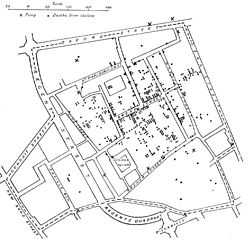GIS
GIS may stand for Geographic Information Sciences or for Geographic Information System. These are two different but related things in geography. The Geographic Information Sciences include many fields of knowledge that help to understand geographic information while a Geographic Information System is a system designed to capture, store, manipulate, analyze, manage, and present all types of spatial or geographical data and allow for the study of "layers" of geographic information.
GIS also known as geographic information system is a computer system made for capturing and displaying positions on the earth’s surface and portraying data in many different ways on maps. Its main job is to help in analyzing groups of data and in finding correlations or patterns. For example a map could use GIS to find out the amount of rubbish in one area, and also include how many factories and types of factories are in that area.
GIS can store information about a location and help provide knowledge on many different topics in a location. Users can specify a place via latitude and longitude, postal code or address. Then GIS can provide information about the people in that area including: income, population and education levels. It can also tell about physical things such as soil types, vegetation, water sources, manmade structures like buildings and roads.
GIS Media
E. W. Gilbert's version (1958) of John Snow's 1855 map of the Soho cholera outbreak showing the clusters of cholera cases in the London epidemic of 1854
Example of hardware for mapping (GPS and laser rangefinder) and data collection (rugged computer). The current trend for geographical information system (GIS) is that accurate mapping and data analysis are completed while in the field. Depicted hardware (field-map technology) is used mainly for forest inventories, monitoring and mapping.
Hillshade model derived from a digital elevation model of the Valestra area in the northern Apennines (Italy)
Aboard Air Force One enroute to the disaster, President Biden reviews maps of damage assessments, made by FEMA and the Civil Air Patrol's geospatial team in response to the 2023 Hawaii wildfires






